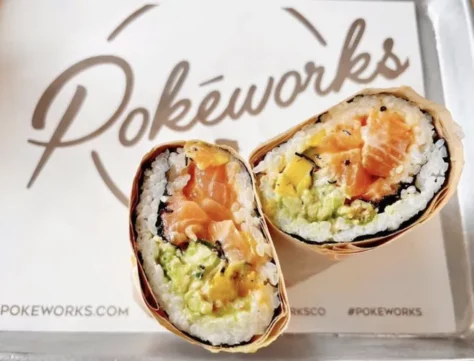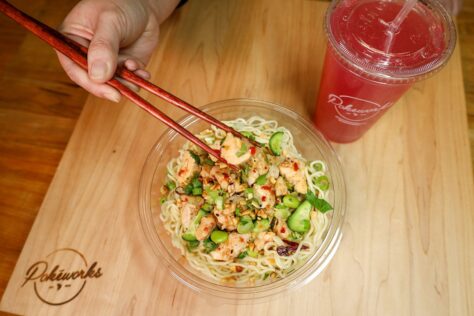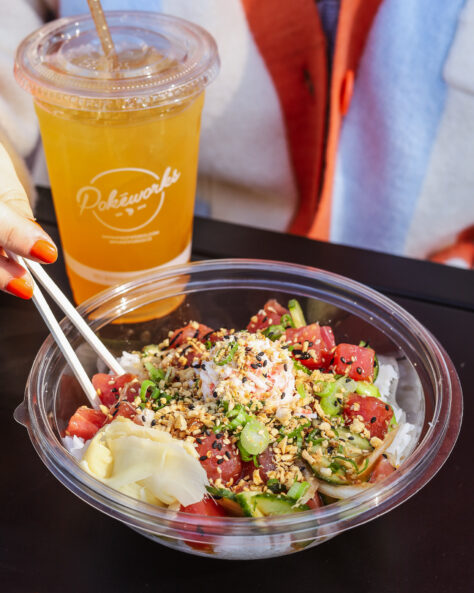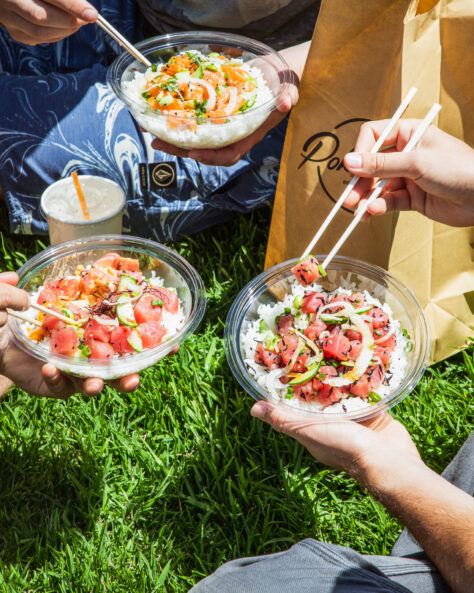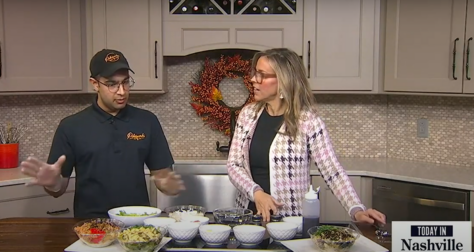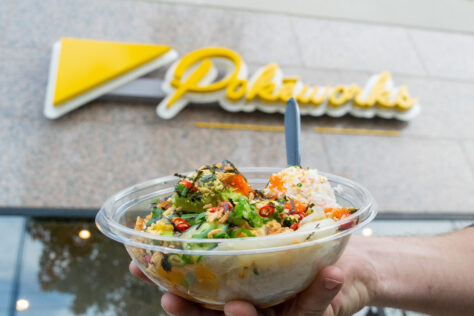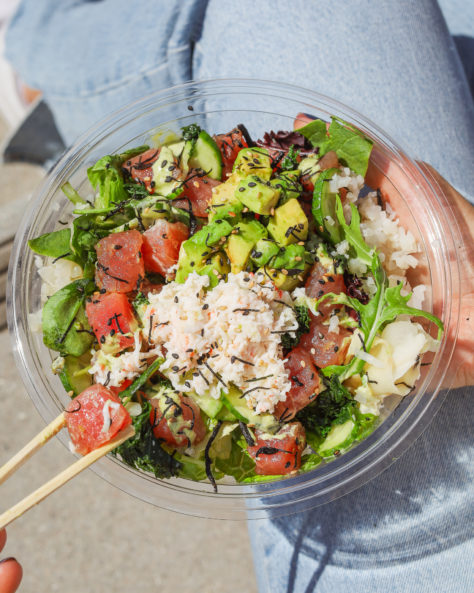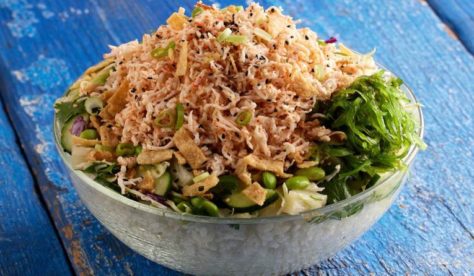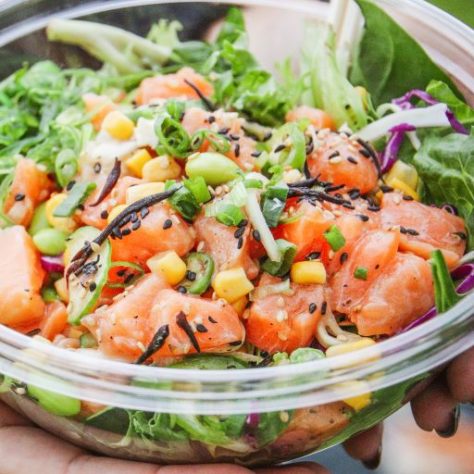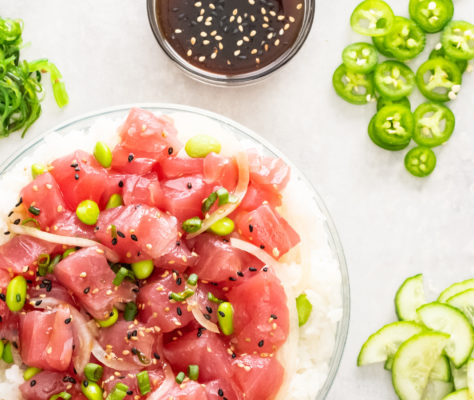ARE POKE BOWLS REALLY HEALTHY?
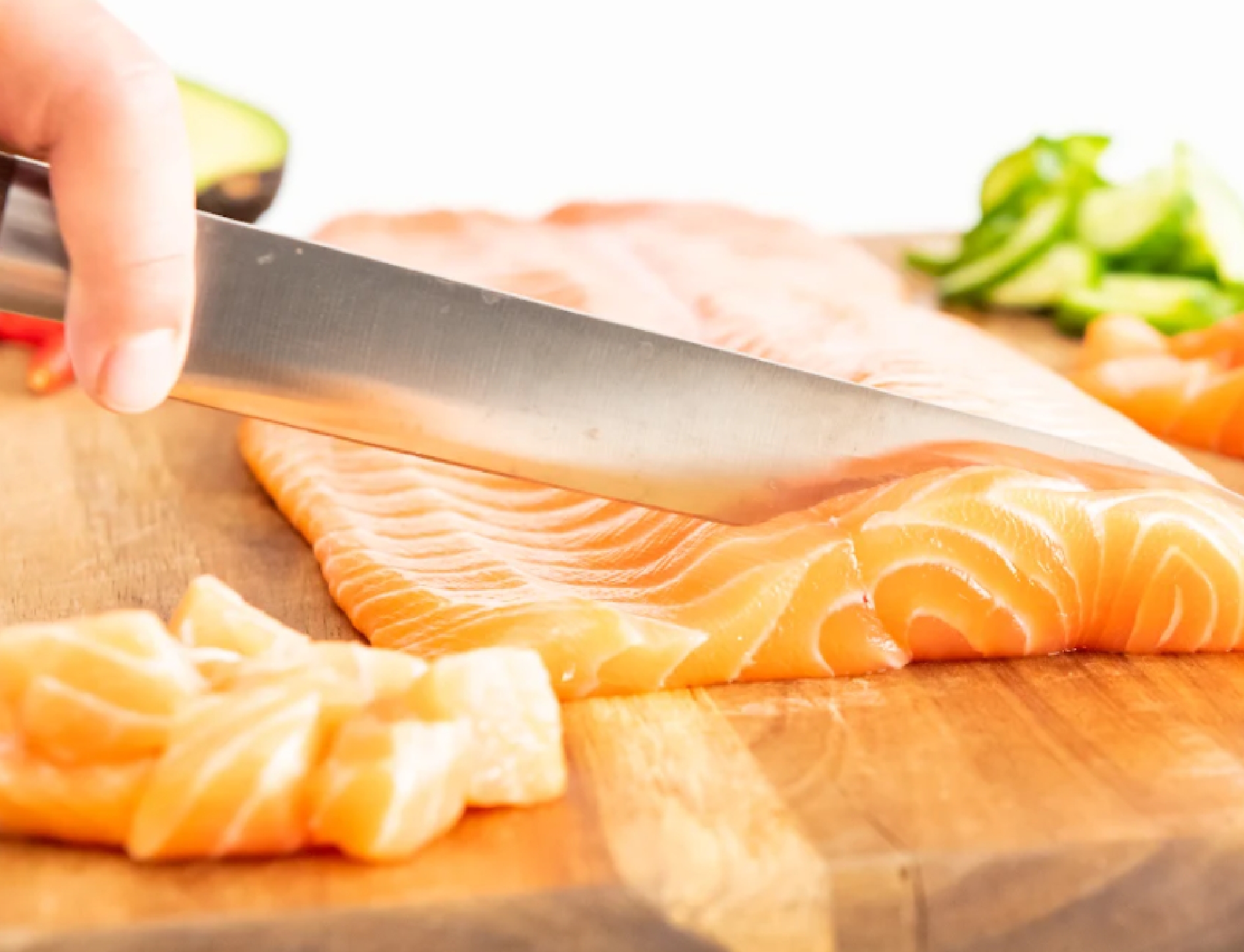
Are Poke Bowls Really Healthy? We Asked Nutrition Experts—and You Might Be Surprised What They Have to Say
It wasn’t that long ago that poke bowls were unfamiliar and new, but these days poke shops seem to be just around every corner. Outside of the fact that they’re absolutely delish, this Polynesian-inspired bowl is also wildly popular among those looking for a nutritious meal.
Typically, poke, pronounced po-kay, begins with a sushi rice base. That is topped with cubed, raw fish that is often tossed in a marinade. From there, there is really no limit to what can be added on top. Veggies, fruit, nuts, coconut flakes and sauces are just a few of the possible addition to a bowl.
We love poke just as much as you, but we have a few questions about the claims that they make for a seriously healthy meal. We tracked down nutrition experts for their take and learned that the health of a poke bowl is almost entirely in how you build it.
Is Poke Healthy?
“You almost want to think of a deconstructed sushi roll,” says Brittany Jones, a registered dietitian working with young professionals. “You’re going to have some kind of vegetable, you’re going to have a raw fish and you’re going to have a sauce.”
Choosing brown rice and paying close attention to serving size is recommended by Jones, who says that when you’re dining out, more and bigger is the norm. Don’t be afraid to ask to have the rice cut in half or capped at half a cup.
“I always tell people to just add more veggies as the base,” says Magryta. “A lot of restaurants offer quinoa as the base, which is much healthier, has more protein … and is a lot more nutrient-dense.”
Protein That Packs a Punch
Most of the protein you’ll find on top of a poke bowl is going to be a lean protein, says Jones. There’s raw fish like salmon and ahi tuna along with cooked shrimp and chicken and vegan choices including tofu and tempeh.
Until you start exploring fried choices, like shrimp tempura, it is hard to go wrong when adding protein. Because of this, Magryta doesn’t encourage a right or wrong choice but thinking about taking things up a notch by asking for the option that will offer additional nutrients.
While ahi tuna is one of the most common choices, she suggests asking for raw salmon instead.
“A lot of people talk about omega-3s fatty acids and why that is such a benefit to poke bowls,” she explains. “I always remind people that the ahi tuna doesn’t have nearly the amount of omega-3s than salmon does.”
Related: 5 Pain-Fighting Foods You Should Add to Your Diet Today
Topping Your Poke Bowl
Once you’ve got the base and the protein, the fun begins. The toppings for a poke bowl are practically limitless. This can be your downfall or your victory if your goal is the assemble a super healthy meal.
“Pile on the veggies,” encourages Jones—and Magryta agrees. She mentions cucumbers, zucchini, beets, and carrots, giving the thumbs up on adding as much as your heart desires.
“They offer wonderful vitamin and nutrient compositions and are very low in calories and fat,” Magryta explains.
Don’t forget about the seaweed—Magryta says it is loaded with micronutrients and it is high in idonine and tyrosine, two nutrients to promote thyroid health.
So what about toppings to avoid? Starchy fruits and vegetables like edamame and pineapple can up the carb content, says Jones, encouraging smaller portion sizes for these options. If you’re hoping to keep your calorie count low, Alix Turoff, MS, RD, and CPT, suggests being careful with crunchy and crispy toppings like fried wontons and nuts.
“While nuts can be healthy, they can also add a lot of calories and fat to a meal which can be an issue if you’re trying to lose weight.”
Related: How to Make Kombucha at Home
The No. 1 Poke Bowl Mistake: Too Much Sauce
“Where you can go wrong is really the sauces that you add,” says Magryta. “Some of the sauces that are really mayonnaise-laden or some of the soy sauces can be really high in sodium.”
Specifically, choices like ponzu sauce, soy sauces, and even sriracha aioli are often going to contain more sodium. While not everyone is keeping a close eye on their sodium intake, those that are could easily go way over their daily limits with a trip to a poke shop.
To avoid making this mistake, Magryta suggests either making poke at home, where you are in full control of the ingredients or making your own dressing by asking to skip the sauce and add little sesame oil and rice vinegar instead. If you love that sriracha mayo, ask for half the typical serving so you can enjoy what you love without consuming excessive calories.
Related: Try This Shoyu Ahi Tuna Poke Recipe
Follow Your Cravings
Each of these nutrition experts took the chance to add that their suggestions are not hard and fast rules. Instead, they’re recommendations being offered to those who specifically want to make the most nutritious choices while eating poke. If you want to keep your carb intake lower or limit the calories in your meal, they’ve got you covered.
If you don’t, if you’ve got a craving for sushi rice and sriracha aioli, you don’t need permission to go for it.
“If you want tonight to be the night you get your favorite poke bowl, I suggest planning for that, too,” says Jones. “Because that is one way you can have that and enjoy it and not have it with a side of guilt.”
When compared to many other choices that can be made while eating out, a poke bowl is going to be a more nutritious option even when you make higher-carb, higher-calorie choices, Magryta points out. Adding white rice isn’t a deal-breaker because the variation of veggies and protein choices are bringing so many nutrients to the meal.
“It’s not about being perfect. It’s about enjoying and making good choices and having an awareness around your food,” she says.


